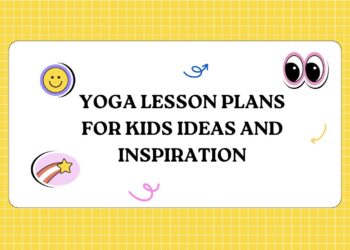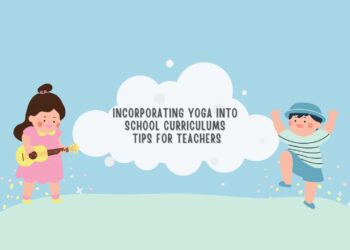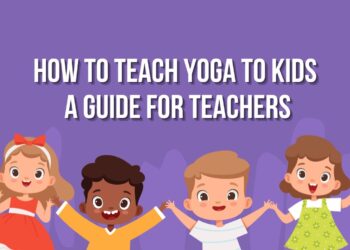Creating a calm classroom environment is essential for effective learning and the overall well-being of students. With the pressures and distractions that students face today, it can be challenging for teachers to maintain a peaceful and focused atmosphere. Incorporating yoga into the classroom is a powerful strategy to promote calmness, reduce stress, and enhance students’ ability to concentrate. Here’s how you can use yoga to create a calm classroom environment.
1. Start the Day with Mindful Breathing
Mindful breathing is a simple yet effective way to set a calm tone for the day. By focusing on their breath, students can center themselves and transition smoothly into learning.
- Morning Breathing Exercises: Begin the day with a short breathing exercise. Ask students to sit comfortably at their desks, close their eyes, and take slow, deep breaths in and out through their noses. Guide them through a few rounds of deep breathing, encouraging them to focus on the sensation of the breath moving in and out of their bodies.
- Breathing Techniques: Introduce simple techniques like “Balloon Breathing,” where students imagine inflating a balloon in their stomachs as they inhale and slowly deflating it as they exhale. This visualization helps them concentrate on their breath and calm their minds.
Tip: Regular morning breathing exercises help establish a routine that students can rely on to start their day feeling calm and focused.
2. Incorporate Yoga Breaks Throughout the Day
Incorporating short yoga breaks during the school day can help students reset their focus and reduce stress, leading to a more productive and calm classroom environment.
- Stretch Breaks: Use simple yoga stretches between lessons or during transitions to help students release tension and refocus. Poses like Cat-Cow, Seated Forward Bend, and Chair Pose can be done at their desks or in a small space.
- Mindful Movement: Encourage students to stand up and stretch or move mindfully between classes. Gentle movements, such as rolling their shoulders, stretching their arms, or doing a quick Tree Pose, can refresh their bodies and minds.
- Guided Relaxation: After a particularly challenging lesson or before a test, lead students through a short guided relaxation exercise. Have them close their eyes, take a few deep breaths, and visualize a peaceful place, helping them relax and regain focus.
Tip: Consistent yoga breaks not only help maintain a calm atmosphere but also improve students’ ability to concentrate and engage with their work.
3. Create a Relaxing Space for Yoga Practice
Designating a specific area in the classroom for yoga and relaxation can make it easier to integrate these practices into the daily routine.
- Yoga Corner: Set up a “yoga corner” with a few mats, cushions, or blankets where students can go for a quick stretch or relaxation session. This space can be used for scheduled yoga breaks or whenever a student needs to take a moment to calm down.
- Soothing Environment: Decorate the yoga corner with calming colors, plants, and soft lighting to create a peaceful atmosphere. You can also include a few mindfulness tools, like stress balls or a small sand garden, for students to use.
- Music and Sound: Play soft, calming music or nature sounds during yoga sessions to enhance the relaxing environment. The sound can help mask distracting noises and create a soothing background that supports concentration.
Tip: Having a dedicated space for yoga and relaxation signals to students that this is a place for calm and mindfulness, reinforcing the importance of these practices in their daily routine.
4. Teach Mindfulness and Emotional Regulation
Teaching students mindfulness and emotional regulation techniques through yoga can empower them to manage their emotions and behaviors more effectively.
- Mindfulness Exercises: Incorporate short mindfulness exercises into the day. For example, ask students to take a “mindful minute” where they close their eyes and focus on their breath, noticing any thoughts or feelings that arise without judgment.
- Emotional Check-Ins: Use yoga sessions as an opportunity for emotional check-ins. Begin or end the practice by asking students how they feel, encouraging them to use yoga and breathing techniques to manage any stress or anxiety they might be experiencing.
- Gratitude Practice: Incorporate a daily or weekly gratitude practice into your yoga sessions. Have students share something they are grateful for during or after yoga, promoting a positive mindset and reducing negative emotions.
Tip: Regular mindfulness and emotional regulation practices help students develop resilience and the ability to stay calm in challenging situations.
5. Use Yoga as a Tool for Conflict Resolution
Yoga can be a valuable tool for resolving conflicts and improving classroom dynamics. By teaching students how to manage their emotions and respond to conflict with mindfulness, you can create a more harmonious environment.
- Partner Yoga: Encourage cooperation and teamwork by incorporating partner yoga poses into your sessions. These poses require communication and trust, helping students build positive relationships with one another.
- Breathing for Calm: When conflicts arise, guide students through calming breathing exercises before addressing the issue. This helps them approach the situation with a clearer mind and reduces the likelihood of escalation.
- Mindful Reflection: After resolving a conflict, use yoga or meditation to help students reflect on the experience. Ask them to consider how they felt, what they learned, and how they can apply mindfulness to future conflicts.
Tip: Teaching students to use yoga as a tool for conflict resolution not only helps maintain a calm classroom environment but also equips them with lifelong skills for managing relationships.
6. End the Day with Relaxation and Reflection
Ending the school day with a calming yoga session helps students transition from the classroom to home, leaving them with a sense of peace and accomplishment.
- Cool-Down Poses: Finish the day with a few gentle yoga poses, such as Child’s Pose, Savasana (Corpse Pose), or Legs-Up-the-Wall Pose. These poses help release any remaining tension and prepare students for relaxation.
- Reflective Journaling: After the yoga session, encourage students to spend a few minutes journaling about their day. This reflection can help them process their experiences and end the day on a positive note.
- Group Meditation: Lead the class in a short group meditation, focusing on deep breathing and positive thoughts. This collective practice fosters a sense of community and calmness that students can carry with them as they leave school.
Tip: A consistent end-of-day routine that includes relaxation and reflection helps reinforce the benefits of yoga and mindfulness, making these practices a natural part of students’ lives.
Conclusion
Incorporating yoga into the classroom is a powerful way to create a calm and focused learning environment. By starting the day with mindful breathing, integrating yoga breaks throughout the day, creating a relaxing space for practice, teaching mindfulness and emotional regulation, using yoga for conflict resolution, and ending the day with relaxation, teachers can help students manage stress, improve focus, and enhance their overall well-being. These practices not only support academic success but also contribute to the development of a positive, harmonious classroom atmosphere.










